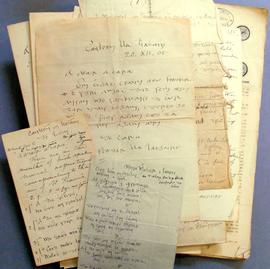Papers relating to Dom Columba Marmion OSB
- IE CA CP/3/14
- Subserie
- 1900-1936
Parte deIrish Capuchin Archives
The subseries comprises a small collection of papers (including photographs) relating to Dom Columba Marmion OSB, an Irish Benedictine abbot and spiritual writer.
Joseph Marmion was born in Dublin on 1 April 1858 to an Irish father and a French mother. On the completion of his secondary studies, he was received at the seminary in Clonliffe College in Dublin in January 1874. He completed his preparation for the priesthood in Rome and was ordained there in 1881. On returning to Dublin, he was appointed professor of philosophy at Clonliffe. On 21 November 1886 he entered the newly founded Belgian abbey of Maredsous, with which, by virtue of the Benedictine vow of stability, he was to be associated for the rest of his life. On commencing his life as a Benedictine, he took Columba as his religious name. The first thirteen years of his monastic life (1886-99) were spent at Maredsous itself. In 1899 he was sent as prior and professor of theology to the abbey of Mont-César in Louvain, Belgium, where he remained for ten years. He was appointed the third abbot of Maredsous in 1909, and he remained there for the rest of his life. He died in Maredsous on 20 January 1923. The first of Marmion’s great spiritual books, ‘Christ, the life of the soul’, was published to considerable acclaim in 1916. This was followed in quick succession by ‘Christ in His mysteries’ (1919), and ‘Christ the ideal of the monk’ (1922). Collectively, these books are seen as classics of Christian spirituality. Dom Columba Marmion OSB was beatified by Pope John Paul II on 3 September 2000.



